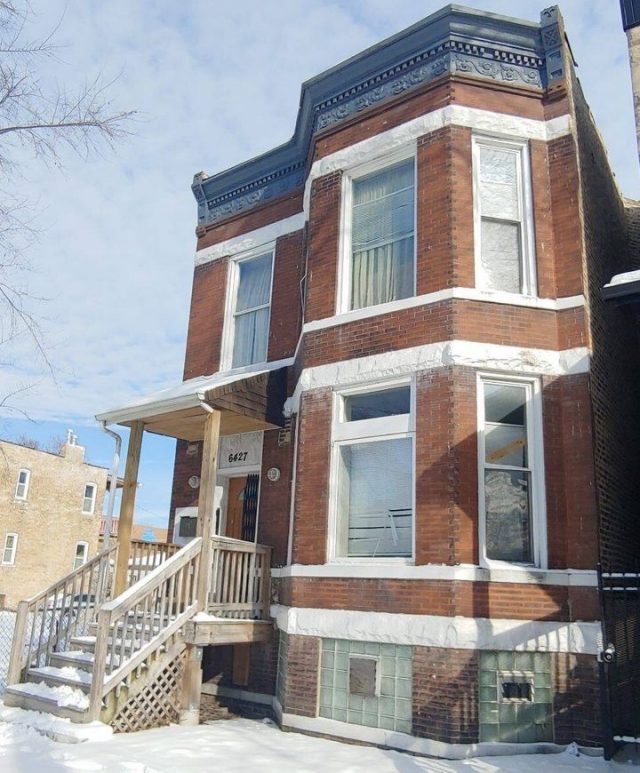
By Nina Golgowski
Black Voices
The former Chicago home of Emmett Till, the 14-year-old Black boy whose 1955 lynching in Mississippi helped ignite the nation’s civil rights movement, has been given official landmark status amid efforts to transform the building into a beacon for Black Americans and a living remembrance of their history.
The two-story brick house on the South Side of the city, where Emmett lived with his mother, Mamie Till-Mobley, received landmark approval from the Chicago City Council on Wednesday. The designation should protect it from future demolition and significant changes to its exterior.
“It is absolutely the blessing that we had prayed for,” said Naomi Davis, whose Chicago-based nonprofit Blacks in Green purchased the home last fall amid concerns that it would be demolished due to its dilapidated condition.
Davis told HuffPost on Thursday that her organization, which works to create environmentally conscious, self-sustaining Black communities, plans to repair and transform the home into an international heritage pilgrimage site. There, people will be able to learn not just about Emmett’s life in the West Woodlawn community, which was one of Chicago’s first Black middle-class neighborhoods, but also about the Great Migration of African Americans from the South to the urban North during the early to mid-1900s.
“We populated cities like Chicago and cities east and west of here, and we were integral in making those cities great, making them prosper,” Davis said.
She envisions turning the Till-Mobley home into a place where local Black artists and entrepreneurs will be able to make a self-sustaining income from work sold on-site, while visitors can hear and exchange stories at a neighboring community theater.
“With the theater next door, it amplifies the ability to tell different dimensions of the story and gives people a way to spend several hours to rest and reflect, enjoy the garden and really amplify information about the Great Migration and the Till family,” she said.
“We are about the business of rewriting the narrative of who Black people are,” Davis explained. “We are telling the tragedy of Emmett Till through the lens of the Great Migration, which, by our account, is America’s underreported history.”
Ward Miller, executive director of the nonprofit Preservation Chicago, who suggested the home be designated a Chicago landmark, also emphasized a need to tell the story not just of how Till died but of how he lived.
“Emmett’s story [usually] begins with a train ride to Mississippi [to visit relatives] … but we wanted to frame and tell the story of Emmett Till the person,” he said, The 14-year-old was caring, funny and a favorite of many neighbors on the block, Miller said. “I think people can come to a better perspective if people know about Emmett the person.”

The Till-Mobley house, built in 1895, is in bad shape at the moment, with both Miller and Davis describing it as completely uninhabitable. “It has five pages of code violations,” said Davis, who estimated needing to raise around $11 million to see her dream come to fruition.
Because of its new landmark status, the house must remain in large part as it was when Emmett and his mother lived there. The 2,400-square-foot structure has had only minor and reversible modifications since 1955. These changes include a wooden front porch that replaced concrete steps and glass block that replaced basement windows, according to a Landmark Designation Report by the Commission on Chicago Landmarks.
These changes “do not impair the building’s ability to convey its significant association with Emmett Till and Mamie Till Mobley in particular, and the Civil Rights Movement in general,” the report states.
Miller also stressed how the property preserves history. “This really is a touchtone to Emmett’s life and the life that he knew,” Miller said.
Mamie Till-Mobley lived in the house until 1962 while working to advance the civil rights agenda and honor her son after his death.
Her only son was kidnapped, tortured and lynched while visiting an uncle in Money, Mississippi. His assailants, two white men, had accused him of whistling at a white woman at a grocery store ― a claim that was later recanted by the woman, according to an interview she reportedly gave for a book published in 2017.
Emmett’s body was recovered from a river by fishermen a few days after his murder and, at his mother’s wishes, he was transported back to Chicago for a funeral. His killers were declared not guilty by an all-white, male jury, though shortly after the trial they both confessed to the murder in a magazine interview.
At Emmett’s funeral, his mother insisted upon having an open casket, allowing photos of her child’s battered body to be viewed across the country.
“Let the people see what they did to my boy,” Till-Mobley is quoted as saying.
At a rally later that year in Cleveland, Till-Mobley described her son’s death as a call to action.
“Two months ago, I had a nice six-room apartment in Chicago. I had a good job. I had a son. When something happened to Negroes in the South, I said, ‘That’s their business, not mine.’ Now I know how wrong I was,” she said, according to the Landmark Designation Report. “The death of my son has shown me that what happen[s] to any of us, anywhere in the world, had better be the business of all of us. I am not bitter against anybody. But I will fight until the day I die to see that justice comes to all of the people who have been visited with a tragedy like mine.”




